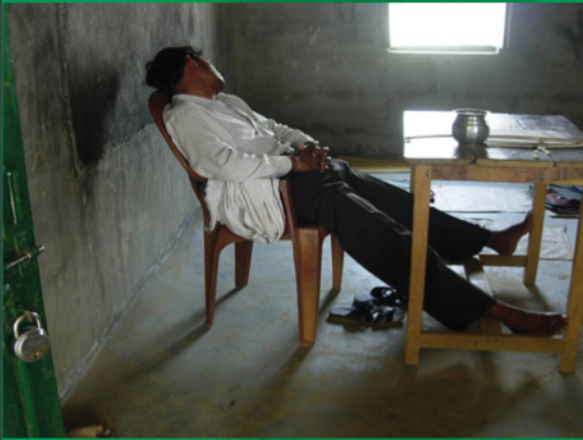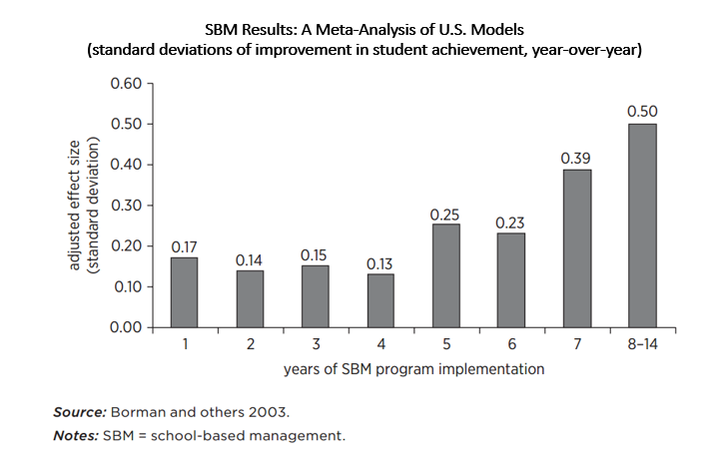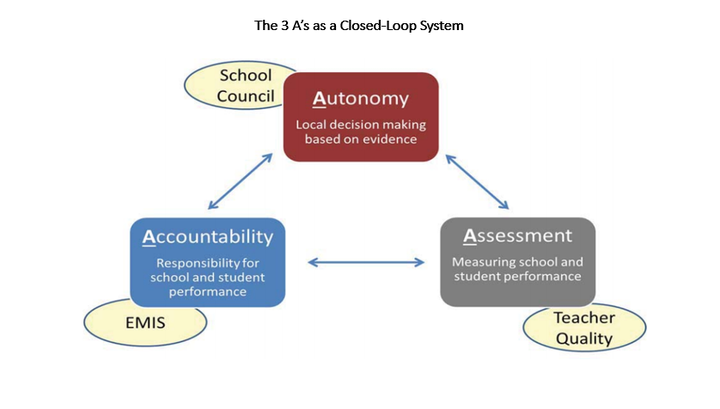
More than 124 million children in developing countries are not in school. More than 250 million children are in school but cannot read. More than 50 percent of students in middle income country could be categorized as functionally illiterate.
What is the problem? The failure in the “service delivery chain” has been cited. This includes inequitable allocation to low-income groups, the “leakage” of funding from central ministries to front-line providers, and the failure of providers such as teachers to perform effectively—or even, in many cases, to show up.
One approach to solving this problem is to improve school accountability. But even that might not be enough. The other critical elements are school autonomy and school assessment. In other words, a more holistic, coherent system is needed. Sometimes known as School-Based Management (SBM), this approach emphasizes decentralization of school-level decision making—or autonomy—to school-level agents. Many of these reforms also attempt to strengthen parental involvement in the schools, sometimes by means of school councils. This approach can also be referred to as School Autonomy and Accountability. I would argue that assessment is integral.
These aspects of school Autonomy, Accountability and Assessment – the 3 A’s – form two important dimensions: (1) the extent to which schools are granted autonomy over decisions—an attempt at improving the compact between those who oversee service provision and those who deliver it; and (2) the extent to which parents are actively encouraged to participate in the decision making—an attempt at improving the voice parents have in the delivery of services.
In mixed public/private systems, one could add choice and competition as well. When parents who are interested in maximizing their children’s learning outcomes can choose to send their children to the most productive schools they can find (in terms of academic results), this demand-side pressure will give all schools an incentive to improve their performance if they want to compete for students.
The evidence on 3 A’s – there is a separate literature on choice and competition – suggests that such reforms can have a significant impact on access and equity, and sometimes on school achievement. But these positive effects only seem to materialize if the reform is meaningful, in the sense that it goes beyond simply socializing parents—generating “participation” without authority. While participation may have intrinsic merits (creating active citizens, empowering poor and indigenous peoples, promoting democracy, instilling voice, and so on), these merits may have limited power to improve schooling outcomes. The 3 A’s initiatives – to matter in terms of producing learning results – need to create effective opportunities for school agents to improve quality. Successful models consistently show that clarity in the role of participation, adequate resources, and capacity building can create positive change. One of the most critical elements, however, is likely to be the ability to oversee teachers.
These reforms are not quick fixes and they do not seem to work everywhere. They take time to take effect. In the United States, such reforms have been shown to take at least five years to improve learning outcomes and at least eight years to produce transformations.

But besides time, the most important aspect is that all three of the 3 A’s must be implemented. It is not enough to do autonomy without accountability. Or autonomy and accountability without a robust assessment system. Challenges often arise in the implementation of such reforms that can undermine their potential.
Autonomy reforms that work must be strong efforts as seen in the reforms in England. In this case giving school directors more powers including the ability to dismiss underperforming teachers. Weaker efforts produce marginal effects as in the weak reforms identified in some developing countries. Stronger accountability measures – as in the Netherlands compared to weak effects as in most developing countries – are also needed. Strong in this case means dissemination and using public reports on school performance that are used to hold schools responsible for the academic results they produce. Moreover, to make autonomy and accountability work, a strong assessment system is needed, which produces timely, relevant and robust information on student and school performance which includes but is not limited to academic performance recorded in test and examination scores.

However, true success occurs when the system of 3A’s is integrated and fully implemented. It is not enough to have the policy right, if it is not fully implemented. In other words, the policy measures need to have “teeth” or they will fail to produce the results that society demands.
Can you think of other countries that have successfully implemented the 3 A’s?
Follow Harry Anthony Patrinos on Twitter at @hpatrinos.
